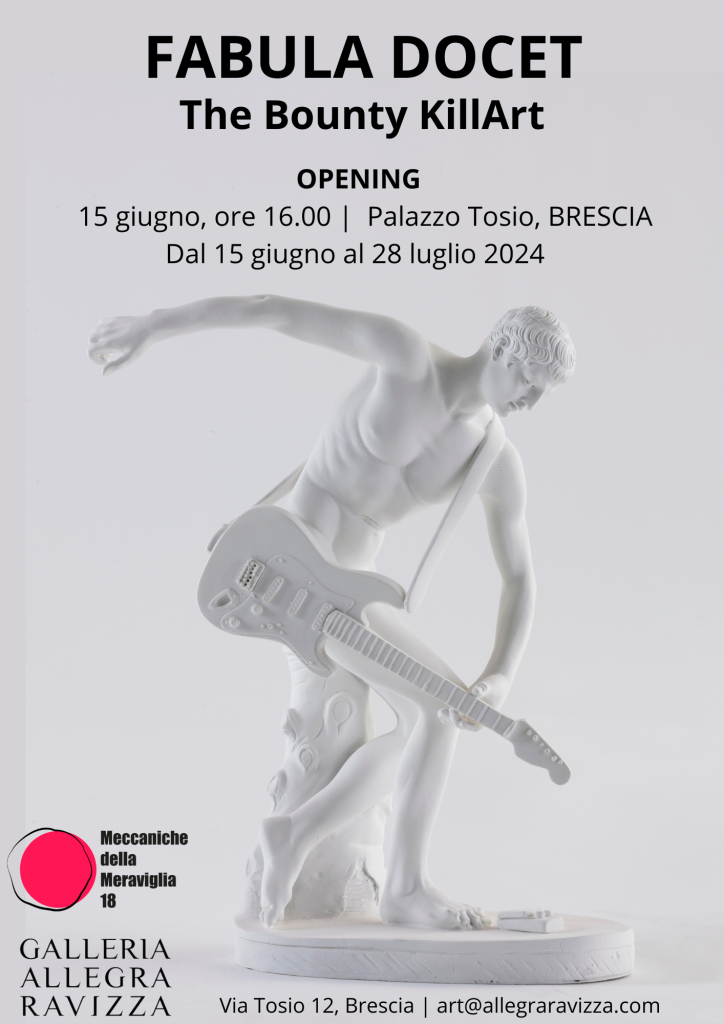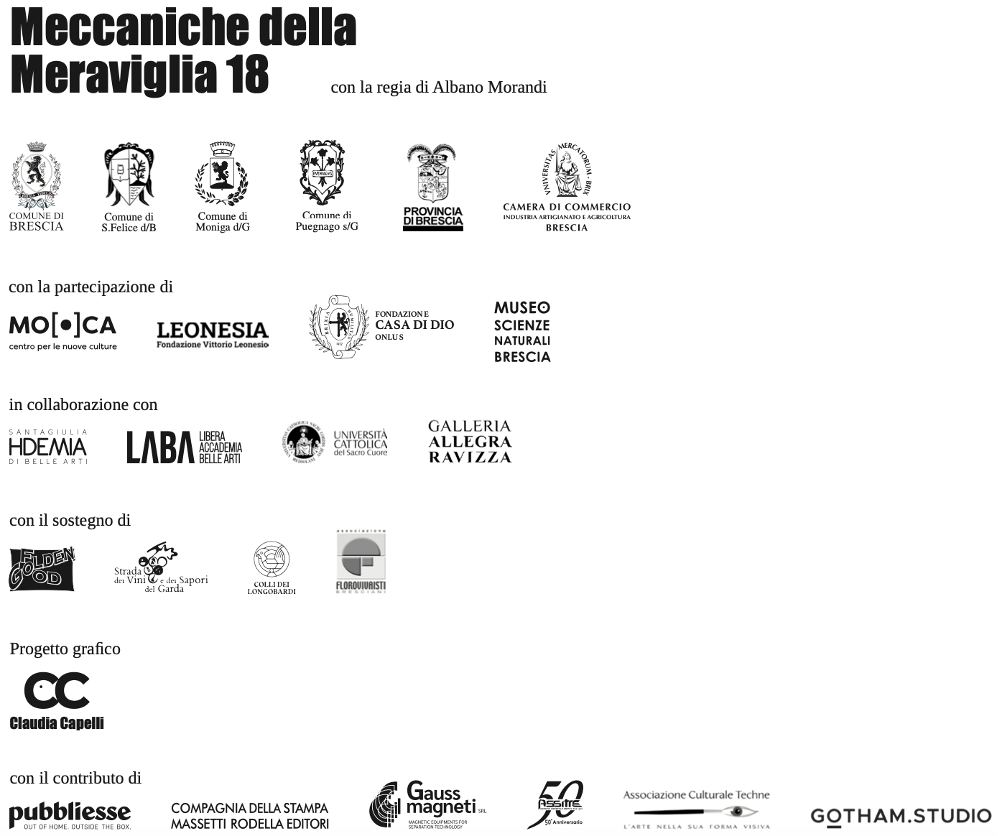FABULA DOCET
The Bounty Killart

OPENING
June 15th, 2024 at 4 pm
Palazzo Tosio, Brescia (Italy)
Opening from Saturday, May 25, the 18th edition of Meccaniche della Meraviglia (Mechanics of Wonder), a review of monographic exhibitions of contemporary art, directed by Albano Morandi, featuring international artists whose work is set up in the period from May to September in architectural spaces of particular value, such as historic palaces, castles, churches and sites of industrial archaeology, and naturalistic contexts located in the territory of the province of Brescia and Lake Garda.
This edition sees six solo exhibitions, featuring big names in Italian art: in particular, there will be the presence of a renowned Italian sculptor, fully historicized, such as Antonio Violetta in the spaces of Palazzo Averoldi (Brescia); the entry of the latest digital and virtual frontiers, with a site-specific project signed by Giuliana Cunéaz (Museum of Natural Sciences, Brescia) in collaboration with Gotham Studio; iconic guerrilla actions and multimedia with the exhibition created by The Bounty KillArt collective (Palazzo Tosio, Brescia); interactions between nature, environment and art, thanks to Fabio Racheli’s monumental plant installation (Moniga del Garda Castle Park); a large exhibition dedicated to Michele Zaza (Leonesia – Vittorio Leonesio Foundation, Puegnago del Garda); and a poetic exhibition by Marco Pellizzola (Church of the Historic Cemetery of San Felice del Benaco).
Founded in 2003 and recognized as one of the most continuous and stable realities entirely dedicated to contemporary visual arts in Brescia, Meccaniche della Meraviglia is characterized by a strong audience loyalty that sees in the project a solid independent initiative able to bring national and international artists to the territory and, at the same time, by a diversification of the target reached thanks to innovative audience development and engagement strategies implemented by the organization.
The main thought behind the project since its first edition is precisely the desire to closely relate physical places, with their history and poetry, and the work of artists. Artists that I choose, not based on my personal tastes, but thinking precisely about what kind of intervention can be realized in that specific place. So mine is really a directorial activity, using artists and places to make them interact. I have always thought of my intervention as a real artistic activity that I like to call “Social Plastic.” (Albano Morandi)
As every year, a catalog of the initiative will be published afterwards, accompanied by the curators’ critical texts and images of the works placed in the environments so as to highlight not only the works but also the architectural and naturalistic contexts that host the initiative.
The Bounty KillArt. Fabula Docet
at Palazzo Tosio in Brescia
curated by Allegra Ravizza and Beatrice Zanello
from June 15 to July 28, 2024
The elegant sculptures of the Turin-based collective The Bounty KillArt arrive in the splendid halls of Palazzo Tosio, mocking and weaving a fine parody of our age. With refined irony and expressive lightness, their works rework classical and Renaissance iconography in a contemporary key: the ancient heroes, immortal deities, various saints and famous men of letters of past centuries are, in fact, brought back to life by the artists, becoming pawns in an entirely new and topical game. Just as in a fabula, each individual creation is a long tale that begins in the past and, detail after detail, minutia after minutia, reaches the contemporary by narrating a story, an intrigue or a fascinating affair. Each work is rich, at times overflowing, with fine and entertaining peculiarities that, besides demonstrating their technical mastery, make it a continuous exploration and discovery from which the viewer cannot help but be enraptured and captivated. The unexpected interweaving of ancient aesthetics and modern themes becomes a vehicle for subtle denunciations or biting depictions of our contemporary times, revealing how each work is actually a child of our time and our world.
